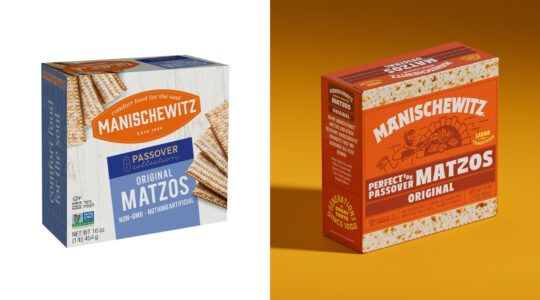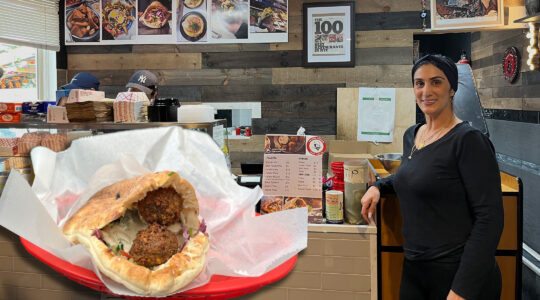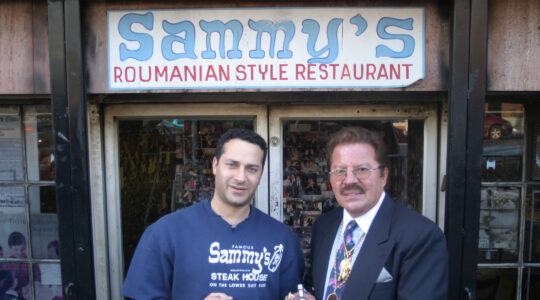When I look in my refrigerator and my pantry in Israel, I notice distinct differences between my “go-to” basics here in Israel versus what was regularly in my kitchen back home. Some of this is intentional – I’m trying to take advantage of the bounty of fresh fruits and vegetables here, as well as Israeli products. Some of the difference is cause and effect – Bissli and Bamba are everywhere, tehina is omnipresent – how can my day-to-day choices not change in that environment? And despite the numerous grocery stores catering to Americans, I’ve tried to go local.
Here’s the result and what’s hanging out in my fridge and pantry:

Tehina: As I’ve written in other posts, tehina has become a regular contributor to meals here in Israel. In Green Tehina for dipping challah or pita, in salad dressings, even over yogurt with some honey and nuts, tehina is a versatile product that has a place of prominence on my shelves and on my plate and will continue to do so back in the States.
Silan Honey: Silan honey is made from dates and darker in color and slightly more intense than regular (bee) honey. While I never put Silan date honey in my tea, I use it in almost everything else – as a topping for yogurt, mixed with tehina on toast, as an addition to a marinade or in a salad dressing.
Spices: Za’atar, Moroccan Paprika, Ras-El Hanut and Bahrat are all spices that have now made their way into my cooking repertoire. In addition to lemon, cilantro, and cumin (which I already used but with other flavor palettes), these spices have really transformed my cooking to taste like the foods I’m eating all over Israel. I’ve also brought home many spice “mixtures” that you’ll find at vendors in the shuk and in some large grocery stores that are toppings for salads and flavorings for other cooking. Many of these have no set ingredients but include an array of dried green herbs, dried onions, spices, and in some cases a sweet note such as raisins (vendors will generally not tell you exactly what’s in them), but these mixtures have greatly enhanced my rice & lentils, my pastatta (a pasta frittata), and zucchini fritters, among others. If you’re spending time in Israel – definitely explore some of these mixtures or better yet – or have someone bring you some back from the shuk when they next go to Israel.
Labneh: Labneh yogurt/cheese, with its slightly sour and tangy flavor, became one of my favorites. Labneh can be made with either cow’s milk or sheep’s milk and you can find it in a softer more spreadable version or turned into small balls and marinated in olive oil and herbs. Personally, I’m partial to the softer more yogurt-like consistency. Add a little olive oil and za’atar and you’re all set to go. It’s absolutely fabulous over a chopped vegetable salad with the addition of fresh herbs such as dill and parsley.
Exotic Fruits: It seems like there has been no tropical nor exotic fruit that my eight year-old didn’t like and want to eat (okay, and you didn’t have to twist my arm to eat it either). And given the choice between fruit or candy, I opted for fruit. Pomegranates are a constant on the grocery list and are eaten by the kids and by grown-ups alike as a snack or for dessert; figs – both raw and cooked – mangos by the dozen, passion fruit scooped out with a spoon, persimmon for salads, pom elites (kind of like an all green grapefruit but slightly larger and sweeter) all make regular appearances. We have even enjoyed raw dates (they look kind of like a smaller unripe apricot, come on a stem and you serve them frozen – sort of like a healthy popsicle). While all of these will continue to make their way into our kitchen back home, it will sadly come with a much higher price tag. Also, think Tu b’Shevat, first fruits and maybe experiment with a Tu b’Shevat seder. It would be a great way to try a lot of these constants that we found in Israel.
Vegetables: Jerusalem Artichokes and fennel topped the list of new vegetable additions to our Israeli household. Jerusalem artichokes are now available year-round in Israel and are fabulous roasted or in a delicious creamy soup (recipe below). Jerusalem Artichokes are really ugly, they’re brown and knobby (make sure they’re brown not green despite the greenish tint of the photo here) and it’s some work to peel them, but the result is great. Fennel was a great add-on to all sorts of salads and excellent roasted or braise. While it wasn’t really on our radar screen in the States, it has now moved to top of the list.

Bissli & Bamba: Okay, so my kids ate Bissli before we went to Israel. But not nearly in the quantities they eat it now. And while it certainly helps that you could buy lunch-sized bags by the dozen in numerous flavors, it also doesn’t hurt that Bamba now comes filled with chocolate or halva or in a strawberry flavor. This is our classic after-school snack.
Vitachick & Juice Concentrates – So, my kids love juice and sugary drinks and this new-to-us syrup, which is sort of like a liquid Kool-Aid, is now always in our fridge. It comes in a bunch of flavors – raspberry, grape and lemonade being our kids’ favorites. You simply mix it with water or seltzer (as my husband says he did for Passover soda in his youth). You can also control the amount of syrup that goes into the glass that made me feel a little more in control of the sugar content. I also regularly use apple juice concentrate syrup. While it was great for making a quick glass of juice, it also came incredibly handy in cooking and making salad dressing.
Pomegranate Molasses – What isn’t Pomegranate Molasses good for? From marinating meats to salad dressings to desserts to drizzling over ice cream– this is a completely versatile product that I love. You should be able to find this at Middle Eastern groceries, kosher markets and Whole Foods. Pomegranate products may just now be becoming common in North America, but it’s been a staple here in Israel for almost as long as pomegranate seeds. Try it as part of a marinade on chicken pieces, as well, and voila– Chicken Rimon a classic for Rosh Hashanah.
Harissa – Harissa is a condiment that has its origins in North Africa, in particular Tunisian cooking. A combination of hot chili peppers and spices with olive oil, harissa can be used to spice up dishes such as falafel and schwarma or used as part of a marinade on meats or added to sour cream, yogurt or mayonnaise to create a dipping sauce. You can buy harissa already prepared or if you’re more ambitious – here’s a great recipe from Clifford Wright, a James Beard Award winner for cookbooks and food writing on the middle east: www.cliffordawright.com/caw/recipes/display/bycategory.php/recipe_id/729/id/2/pg1/3/
Choco– Otherwise known as chocolate milk. There is a product called Choco that is just like Nesquik but made in Israel. Our six year old drank chocolate milk at least three times a day, first made from scratch at home in the morning, after school from the little market on the way home and then again for dinner (assuming it was a dairy meal). When purchasing there are many options – a packaged version (either plastic bottle or box) or if you really want to feel Israeli a bag of chocolate milk that you can buy, snip the corner and drink. By the way, many Israeli’s buy their milk in these plastic bags and put them in a pitcher made expressly for use with these bags and it is generally cheaper, although the more recognizable milk carton that we use in the states is available.
Limonana Sorbet – So the limonana flavor combo – lemon and mint was a huge favorite in our household. We were partial to the Aroma frozen drink of the same name but what we absolutely positively couldn’t keep enough of in our house was Limonana sorbet. It comes in a small styrofoam container that looks like a cute little cooler. It lasted all of about 8 hours in our freezer.
JERUSALEM ARTICHOKE SOUP
From a recipe found in Fresh Flavors from Israel which features well known Chefs throughout Israel. This one comes from Chef Avi Steinizt. I adjusted to make parve.
1.5lbs Jerusalem artichokes, peeled and cut into 2 inch pieces
2 tablespoons olive oil
2 garlic cloves peeled
1 leek (white part only) washed well and finely chopped
2 cups vegetable stock
1/2 cup whipping cream or 1 cup soy milk
salt and white pepper
Garnish
2 Jerusalem artichokes, peeled and shaved with a vegetable peeler
Oil for deep frying
1. Heat oil in a heavy saucepan and sauté the chopped leeks until translucent. Add the garlic and sauté for one more minute (don’t let it burn). Add the Jerusalem artichokes and sauté for a few more minutes
2. Add the stock and bring to a boil. Season with a little salt and pepper, cover and cook for 30 minutes over low heat until the artichokes are very tender.
3. Puree the soup in a food processor and strain. Bring to a boil, add the cream, taste and adjust the season.
4. Prepare the garnish. Heat the oil for deep-frying and fry the artichoke shavings until crisp. Drain excess oil on paper towel.
Note: I did not puree and strain – I just used a stick blender and got it as creamy as I could which worked great. Also, the garnish was a lot of work, if you are in a hurry or don’t have the patience, you could add some croutons both look and crunch.





